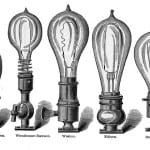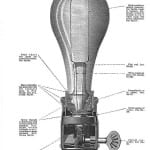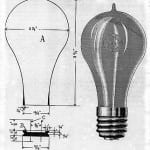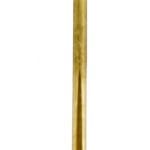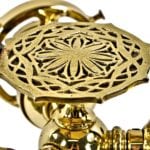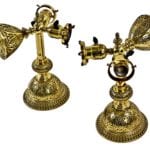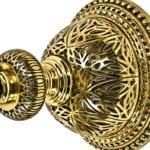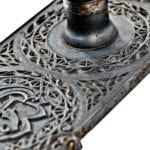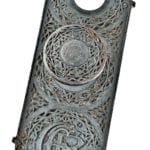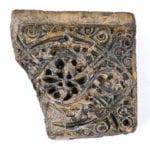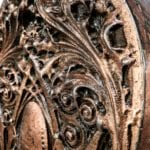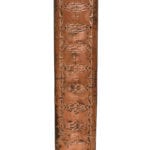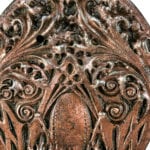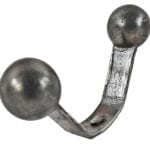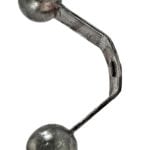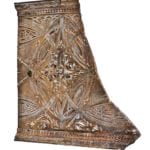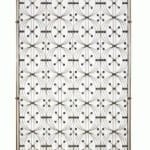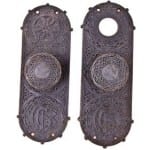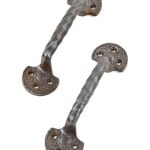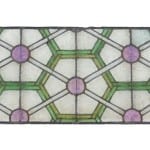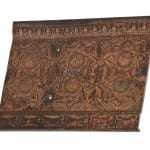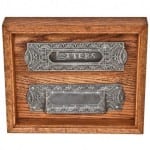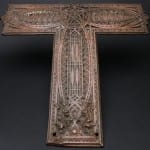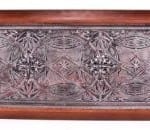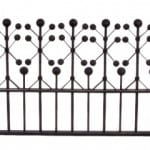original 19th century edison "hairpin" filament mold blown lamps from chicago stock exchange trading room
This entry was posted on April 5 2022 by Eric

i had tim samuelson over to view the bldg. 51 museum collection, shortly before it was packed up and moved to its new location. it's currently being set up for display to a wider audience interested in historic chicago architectural artifacts. in the meantime, the collection catalog, containing the majority of the artifacts, can be purchased here.

bldg. 51 museum's new location with several newly added artifacts and archives (2017).
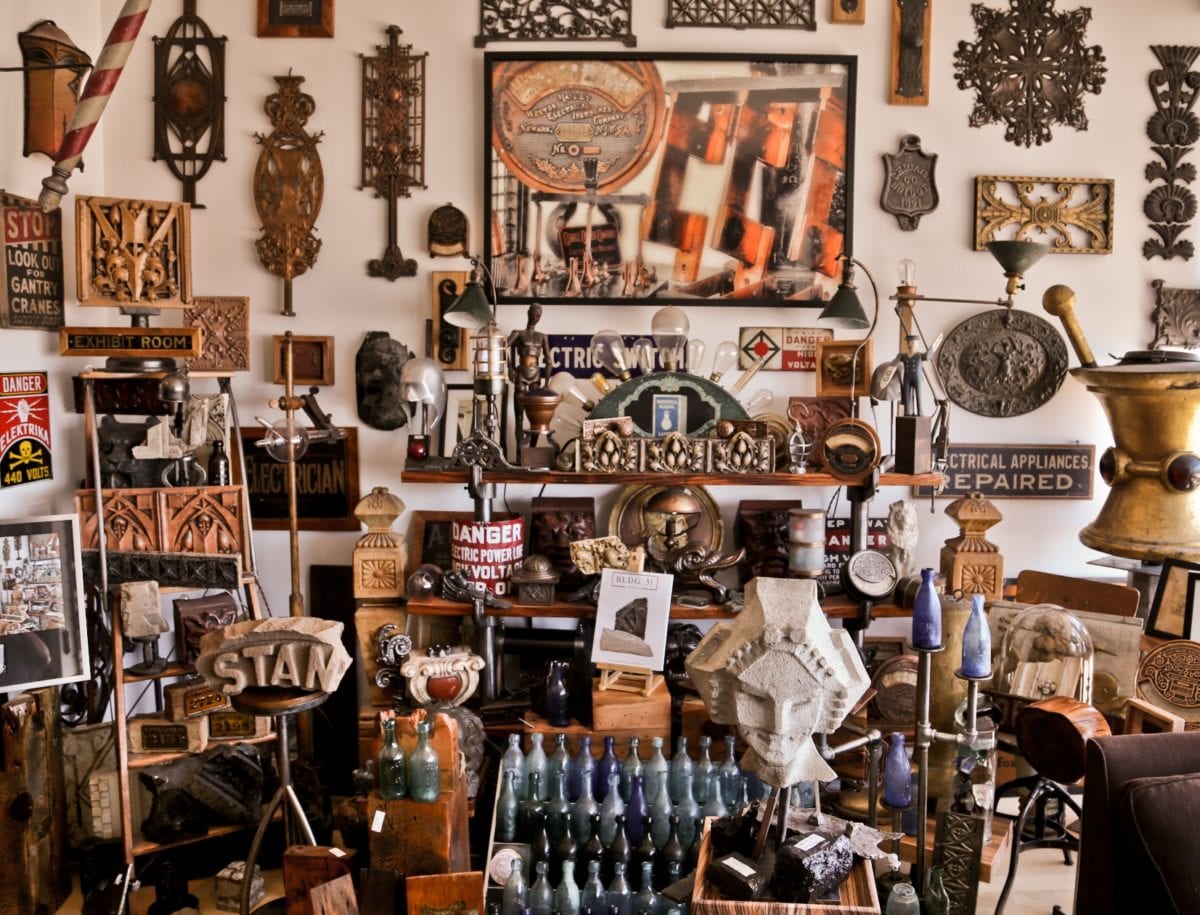
part of the bldg. 51 museum collection on display in 2015.
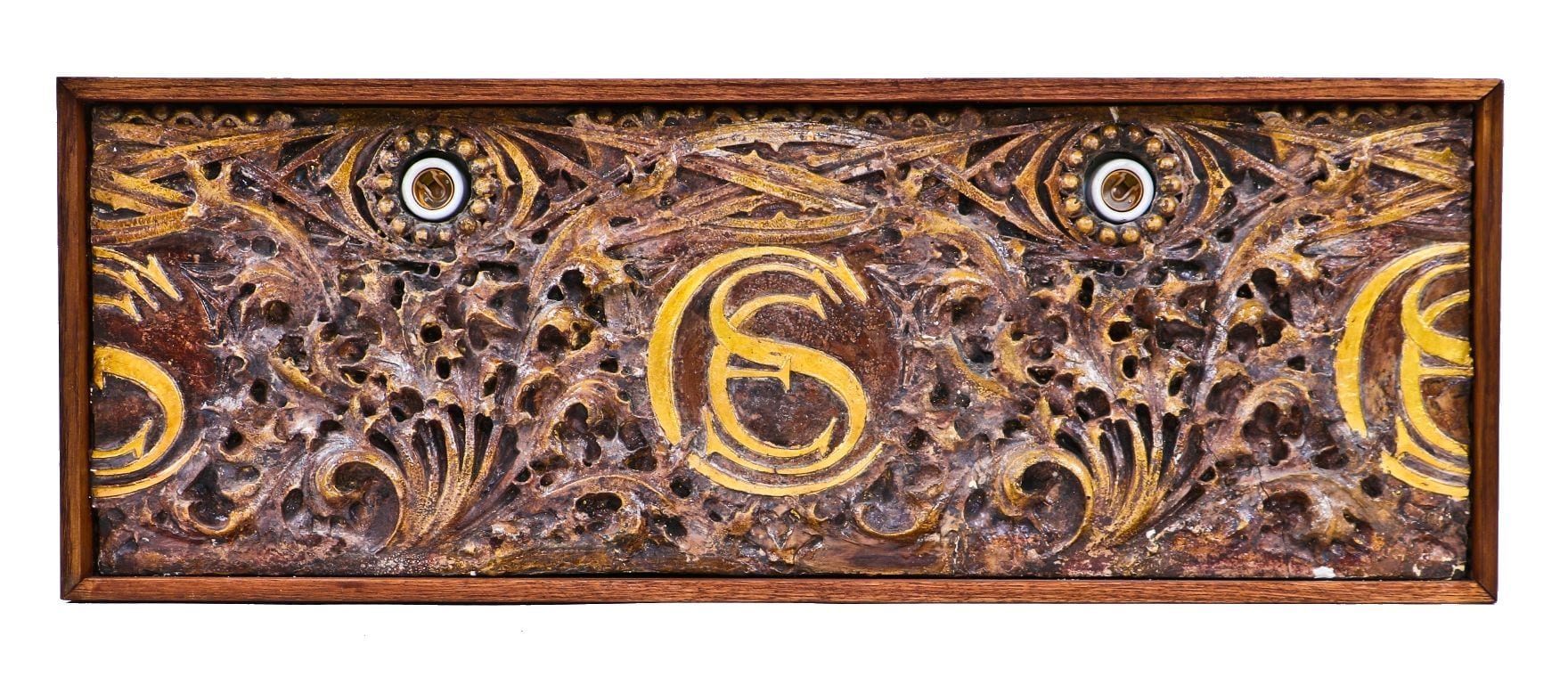
while we were looking over and discussing the sub-collection of artifacts i've gathered from the non-extant chicago stock exchange, tim took interest in the heavily ornamented cast plaster monogrammed panel that has two openings flanking the "cse" monogram, where edison carbon filament light bulbs or "lamps" were once located. he said i should have two of the original (1893) light bulbs - recovered from the trading room during the building's demolition - to go along with the panel, especially since he noticed it had been carefully framed and outfitted with keyless sockets for use with replica edison bulbs.

i was stunned when he ever so casually said, he had some of the light bulbs and would gladly give me a pair with a "lifetime guarantee" if one was to burn out. it was the kindest gesture and i was immensely thankful. i returned the favor by giving him a cast iron ywca elevator cartouche and some aquatic-themed tiles from the jarvis-hunt-designed lakeshore drive athletic club. i certainly didn't have to, nor did he, but when you have two manically passionate people who have committed their lives to being storytellers or caretakers of non-extant building artifacts, it's just the right thing to do.
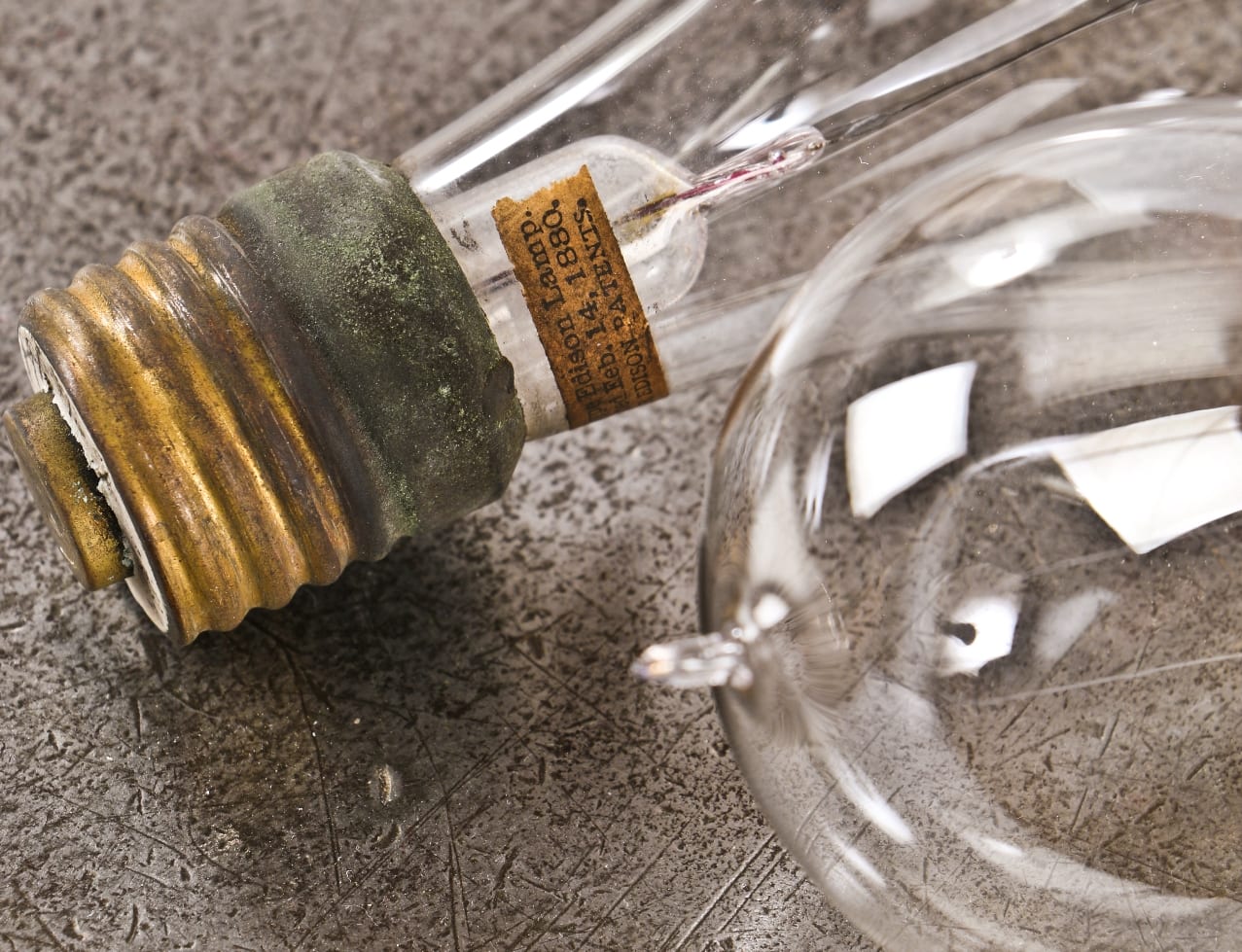
the nearly identical, all original and intact late 19th century sullivan and adler-designed chicago stock exchange interior trading room edison screw base light bulbs or "lamps" were fabricated by the edison general electric company, harrison, nj. the "tipped" mold blown lamps were removed from keyless sockets mounted above the building's trading room art glass skylights shortly before demolition in 1972.
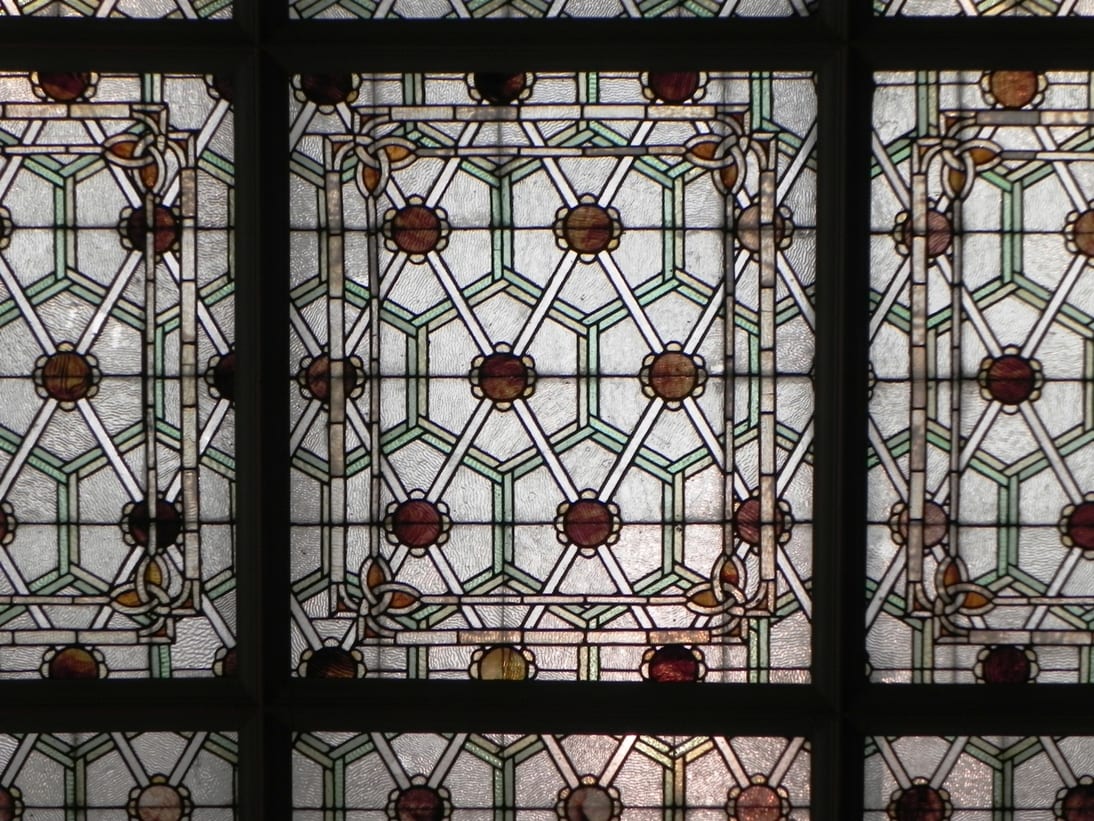
the majority of the trading room ornament (including the incandescent light bulbs) was salvaged by richard nickel, john vinci, tim samuelson and others for reconstruction at the chicago art institute. the artificial light provided by the lamps was not adequate to effectively illuminate the skylights at night, so the light bulbs were turned off and largely forgotten until being rediscovered over 70 years later.
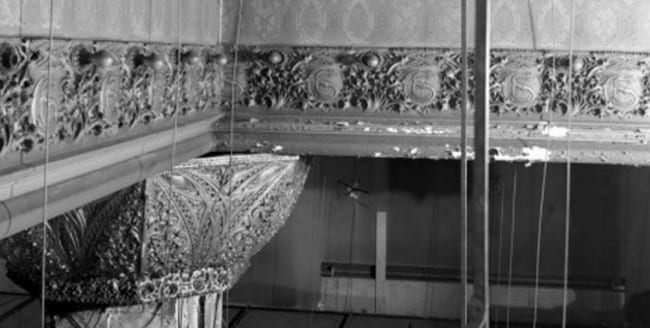
a total of 5,500 lamps were used to illuminate the interior spaces of the chicago stock exchange building, which was completed in 1894. the lamps were supplied by the central electric company, which at the time was the exclusive western agent of western electric supply company, st. louis, mo. the edison screw base lamps were fabricated by the edison general electric company, harrison, nj. the edison light bulb was improved upon, both in material and design, with modified changes being introduced nearly every year between the late 1880's and early 1890's. in 1893 a light bulb known as the "new type edison lamp" was introduced and stayed in production until 1900.

prior to 1893 any and all edison lamps were outfitted with filaments made from carbonized bamboo fibers, a notoriously difficult material for its large variations in performance. in 1893 the edison factories adopted the squirted cellulose filament, which was a man-made carbon fiber that tremendously improved both strength and uniformity. the platinum lead wires were connected to the newly developed hairpin filament with a carbon paste first introduced in 1886. the base of the light bulb was first introduced in 1888, with the number of threads increased and refined further in 1893. the insulator was originally plaster of paris, but by 1890 lamps were treated with a more durable porcelain insulator. the soda lime glass bulb or "envelope" was blown into a mold versus free air, a technique first introduced in 1892. the lamp power of light bulbs used in the stock exchange trading room were approximately 75 watts.
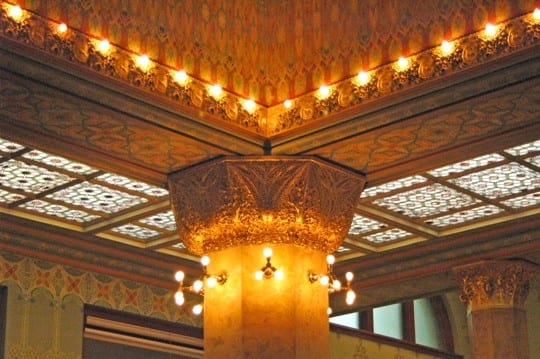
the museum-quality monogrammed cast plaster frieze panel or section was salvaged from the chicago stock exchange building trade room prior to demolition in 1971-72. the reinforced ornamental horsehair (binding agent) plaster panel features a very rich and intricately designed organic design motif in deep relief. the repeating central medallions contain the "cse" (chicago stock exchange) monogram in fanciful, overlapping lettering. originally, edison "long neck" light bulbs with hairpin carbon filaments protruded from the beaded border openings along the top of the panel. the lightly restored gilded finish has darkened significantly with age. raised lettering was retouched with gold leaf. the delicate single-sided plaster panel has been professionally mounted within a varnished oak frame and/or shadow box with period appropriate sockets added to the backside. in addition, the two newly added porcelain bare bulb sockets have been wired with braided cloth lamp cord that feeds out the back. low-watt lighting accentuates the deeply embossed foliage flanking the monograms. the louis sullivan-designed panel was likely fabricated by the decorators' supply company of chicago, il.
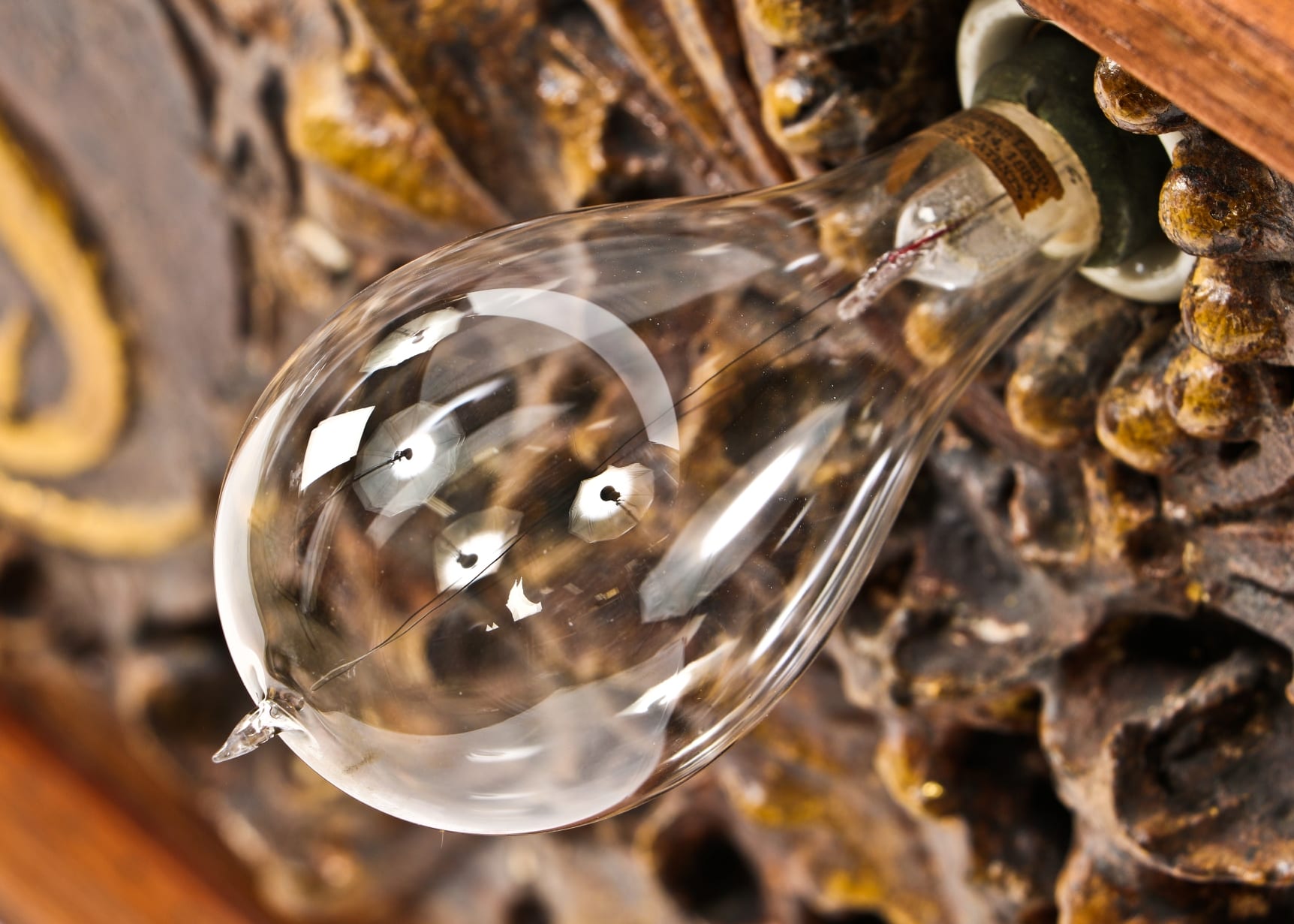
built on the site of the first brick building in chicago (1837), the 13 story steel frame chicago stock exchange building was designed by the architectural firm of adler and sullivan with falkenau & company as general contractors. by its completion in 1894 construction had totaled to $1,131,555.16. the stock exchange contained 13 stories with the single basement containing both pile and caisson foundations (the latter were used on the west party wall). containing 480 offices, it was the second largest commission awarded to sullivan and adler (after the auditorium hotel and theater). the building's exterior was outfitted with ornamental buff-colored terra cotta designed by sullivan and fabricated by the northwestern terra cotta company. its structural system consisted of fireproofed steel framing. the first floor was treated on the exterior as basement, with the second and third floors as an arcade, bay windows extended from the fourth through the twelfth floor and the thirteenth contained a colonnaded ribbon of windows topped by a projecting cornice with a richly worked surface. the interior contained shops on the ground floor with offices on the upper floors of the main block and wings. elevators were located at the center of the building. the trading room occupied one-half of the second and third floors. two sets of stairways were found on floors 4-13. the highly stylized staircase was comprised of copper-plated ornamental iron, oak railings and white marble treads.

when the stock exchange moved in 1908, the trading room was converted into office space and later became a bank. during the course of demolition in 1972, photographer and activist richard nickel was working to salvage ornament on the building when an unstable structure collapsed and he was tragically killed. as a tribute to nickel and sullivan, sections of the trading room stencils, molded pilaster capitals, and art glass were preserved in 1977 at the art institute. they also created a complete reconstruction of this significant room in a new wing of the museum, and erected the monumental entry arch of the stock exchange on the museum grounds near the corner of monroe street and columbus drive.
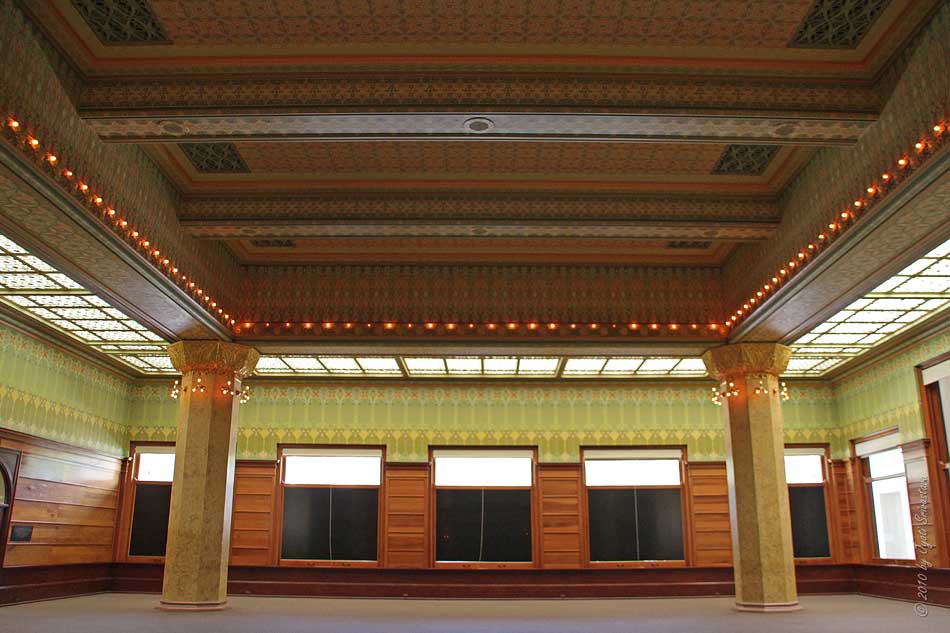
additional artifacts (shown below) from the chicago stock exchange building are currently housed in the bldg. 51 museum.
- elevator door
- door hardware
- baluster
- trading room stencil
- sash lifts
- frieze fragment above elevator
- skylight from trading room
- stringer from staircase
- plaster section from trading room
- mail slot and hood from office door
- t-plate used on the elevator doors
- transom panel above elevator door
- transom panel above elevator doors

This entry was posted in , Miscellaneous, Bldg. 51, New Products, Events & Announcements, New Acquisitions, Featured Posts & Bldg. 51 Feed on April 5 2022 by Eric
WORDLWIDE SHIPPING
If required, please contact an Urban Remains sales associate.
NEW PRODUCTS DAILY
Check back daily as we are constantly adding new products.
PREMIUM SUPPORT
We're here to help answer any question. Contact us anytime!
SALES & PROMOTIONS
Join our newsletter to get the latest information

